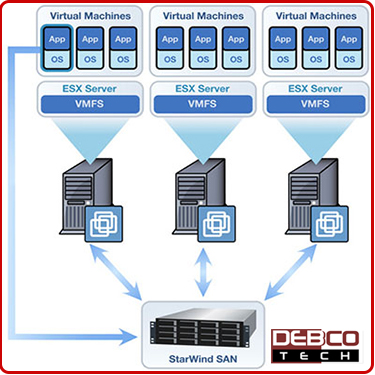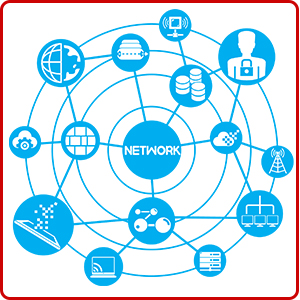Benefit to your business

More efficient use of Company IT resources. "Server sprawl" describes a situation in which multiple, under-used servers take up more physical space and consume more resources than can be justified by their workload. This is often the result of the one-server-per-one-application datacenter model.
When a company acquires or creates new applications, typically the organization deploys each new application on its own server. When there is a small-scale server deployment for a new department or a new branch office, seemingly inexpensive at the onset, additional servers are added to the infrastructure. This creates additional needs for power and operations management, not to mention more floor space. Mergers and acquisitions add to the abundance of servers and applications.
Run a More Efficient Network

According to numerous estimates, most servers deployed in this one server per one application model are running at less than 15% of their capacity. This may be good for response time. However, it also means organizations are not getting the full value of their hardware.
Additionally, costs for replacing the servers down the road must be considered in the initial planning. Space consumption and networking costs can escalate. Electric and cooling costs can grow with each new machine.
However, the real cost of server sprawl lays in the administration. As one expert put it, "Each penny spent on hardware costs a dollar to manage."
As the number and types of server platforms proliferate, IT efficiencies drop. Multiple vendors are used since companies rarely standardize on one operating system. Different hardware systems have different support requirements, demanding many skill-sets of IT staff. On top of that, different operating systems require different patch-management strategies, as well as different backup and restore procedures.
Consolidation

Inundated by server sprawl, organizations are increasingly turning to server consolidation as one means of reducing unnecessary costs and maximizing return on investment (ROI) in the datacenter.
Although server consolidation can substantially increase the efficiency of server resources, it may also result in complex configurations of data, applications, and servers. It is important to have a server consolidation expert on your team.
DEBCO Tech stands ready to analyze your server configuration and business application and recommend changes that will improve the productivity of your Company.
Server Virtualization
A virtual server hosts several applications on one hardware device versus hosting individual applications on individual hardware devices. The Total Operating Cost (TOC) for a virtual server is significantly reduced over using multiple hardware devices.
Server virtualization is the masking of server resources, including the number and identity of individual physical servers, processors, and operating systems, from server users. The server administrator uses a software application to divide one physical server into multiple isolated virtual environments.
Hyperconvergence
The potential of the hyper-converged infrastructure (HCI) is that companies no longer need to rely on different compute and storage systems. It also simplifies managing the computing environment and increases resource-use rates where it is applied.
Hyperconvergence evolves away from discrete, hardware-defined systems that are connected and packaged together toward a purely software-defined environment where all functional elements run on commercial off-the-shelf (COTS) servers, with the convergence of elements enabled by a hypervisor.
HCI infrastructures are made up of server systems equipped with direct-attached storage. HCI includes the ability to plug-and-play into a data-center pool of like systems. All physical data-center resources reside on a single administrative platform for both hardware and software layers. Consolidating all functional elements at the hypervisor level, together with federated management, eliminates traditional data-center inefficiencies and reduces the total cost of ownership (TCO) for data centers.
The primary difference between converged infrastructure (CI) and hyper-converged infrastructure is that, in HCI, both the storage area network and the underlying storage abstractions are implemented virtually in software (at or via the hypervisor) rather than physically, in hardware. Because all of the software-defined elements are implemented within the context of the hypervisor, managing all resources can be federated across all instances of a hyper-converged infrastructure.
DEBCO Tech has the experience to recommend a HCI that will simplify your overall computer operations with the goal of improving the productivity of your Company.
Call us for a free consultation. You will receive a response to your voicemail within 15 minutes if we do not answer live.

